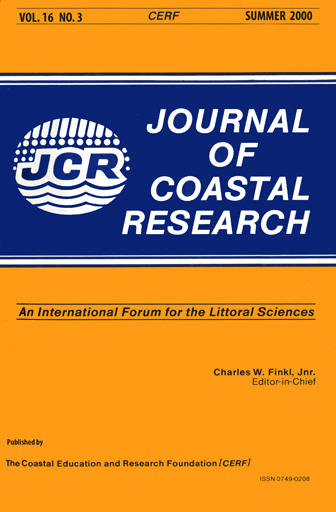Grain-Size-Selective Aeolian Sand Transport on a Nourished Beach
Keywords:
Beach nourishment, grain-size distribution, aeolian decoupling, marine reworking, shell pavement, carbonate, foredunes, the NetherlandsAbstract
The grain-size-selective aeolian processes that take place after a beach nourishment were studied on the island of Ameland in the Netherlands. The beach and foredunes were sampled both before and after nourishment. Grain-size distributions of surface and subsurface sand, wind-laid sand and sand in transport were analysed. The unreworked fill is only moderately sorted and exhibits a large spatial variation. Marine reworking results in a decrease of shell fragments and a decrease in fines on the foreshore, with the exception of the swash mark. During aeolian sand transport, aeolian decoupling results in a backshore with surface lag deposits with moderately sorted sand containing a substantial amount of shell fragments and silt, and patches of sand with less shell fragments. Wind-laid nourishment sand, i.e., the nourishment sand that is blown to the dunes, contains only small amounts of these shell fragments and the sand is finer and better sorted than the nourishment beach sand. However, the nourishment sand that is blown to the foredunes still deviates from the wind-laid native sand; it is more poorly sorted and more negatively skewed. Furthermore, the wind-laid nourishment sand contains significantly more coarse material, i.e., shell fragments, than the wind-laid native sand, which will lead to an increase in calcium carbonate content in the foredunes.


